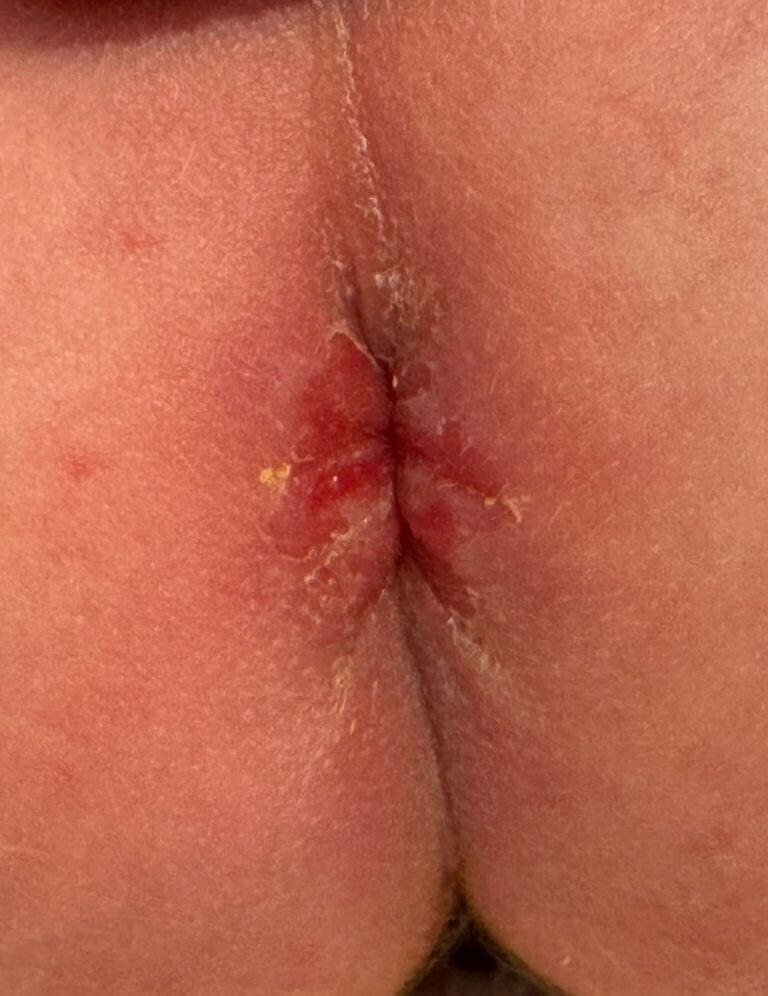
Proctitis as a sign of cow’s milk protein allergy in breastfed babies
Our website includes several important chapters that address the topic of cow’s milk protein allergy. These include:
a. A basic chapter about irritability in babies
b. A chapter specific to cow’s milk protein allergy
c. A chapter dedicated to the sub-genre: cow’s milk protein allergy in breastfed babies
The purpose of this brief chapter is to introduce another sign that may indicate cow’s milk protein allergy in breastfed babies — proctitis.
What is the most important sign of cow’s milk protein allergy in babies?
Hopefully, you know the answer like the back of your hand — stools containing mucus or even blood.
So, what is it that we see in the image attached? What is proctitis?
Proctitis is an inflammation around the anus (perianal area) that can develop in some babies with cow’s milk protein allergy — whether they are formula-fed or breastfed.
I see quite a few babies with cow’s milk protein allergy, but I only encounter proctitis a couple of times a year. In other words, it’s relatively uncommon.
What do we see in the perianal region?
In practical terms, a cow’s milk protein allergy primarily affects the intestines. As a result, we typically observe mucus (or even blood) in the baby’s stool. However, since the inflammation is internal, we usually can’t see it directly.
In some cases, the inflammation is so extensive that it affects the perianal region as well. When that happens, the outward appearance gives us a clue about what might be happening inside the intestines.
In the attached image, notice how the perianal area loses its normal structure and becomes significantly red and irritated. Some describe it as resembling the appearance of an injury caused by improper rectal temperature measurement — although, of course, no such injury occurred.
This visible inflammation around the anus is known as proctitis.
When it occurs in combination with mucus in the stool — indicating inflammation in the large intestine — the condition is referred to as proctocolitis.
Does this indicate the severity of the illness?
Not necessarily. Sometimes, these children are brought in earlier than they might have been otherwise, simply because the sign is visible to the naked eye. Fortunately, once the cow’s milk protein allergy is treated, the inflammation usually resolves on its own.
What about older children who develop proctitis?
In older children, the causes of proctitis are typically different, and may include infections or inflammatory bowel disease. But I’ll leave that discussion for a different post.
In summary, I thought it would be helpful to share an image of proctitis for those parents who need reassurance. While this is not a very common sign, it’s an important one to recognize.
For comments and questions, please register
